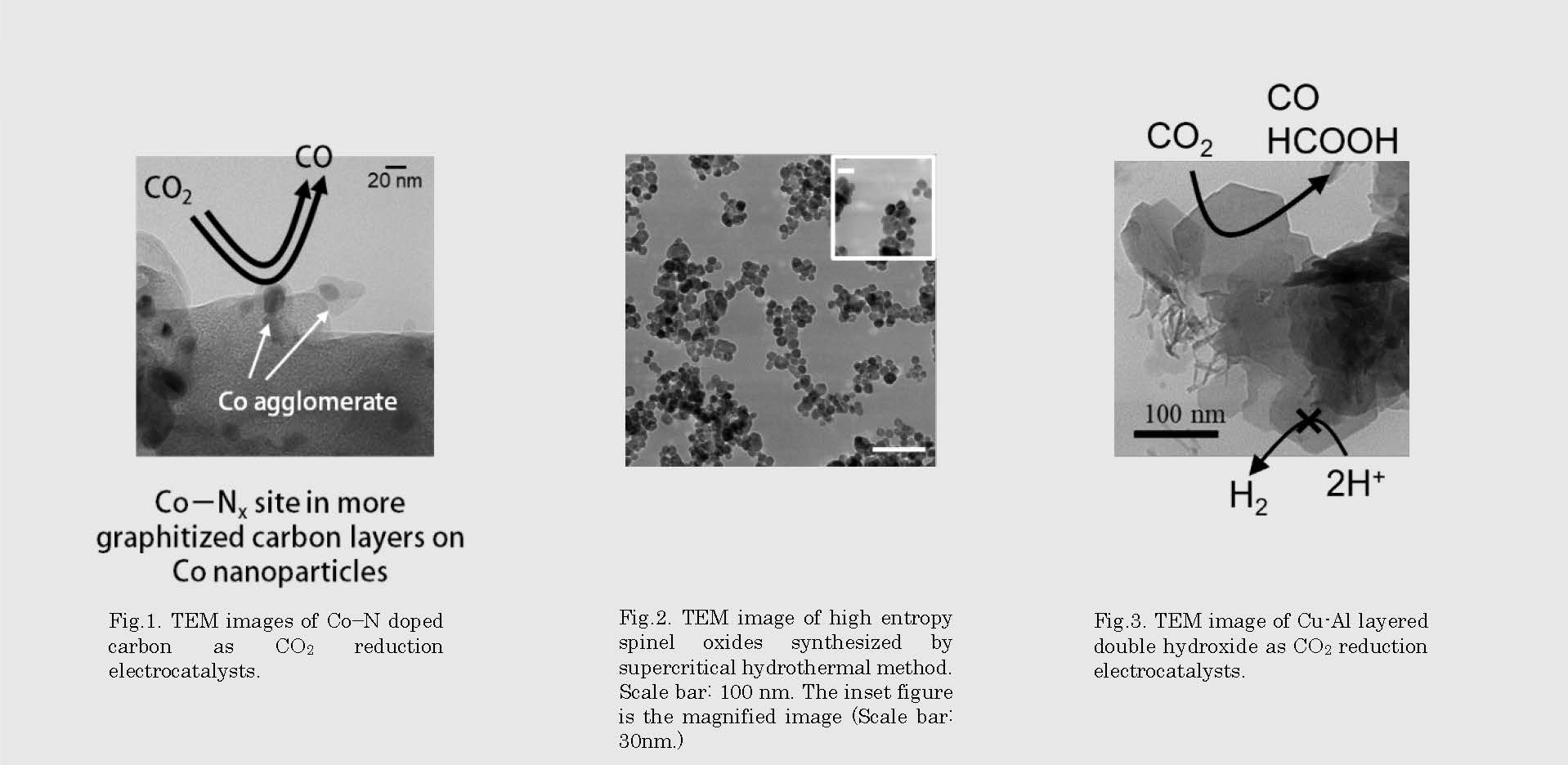IMRAM
Institute of Multidisciplinary Research for Advanced Materials, Tohoku University
東北大学
多元物質科学研究所

LAST UPDATE 2021/05/07
-
研究者氏名
Researcher Name岩瀬和至 Kazuyuki IWASE
助教 Assistant Professor -
所属
Professional Affiliation東北大学多元物質科学研究所
金属資源プロセス研究センター、エネルギーデバイス化学研究分野
Institute of Multidisciplinary Research for Advanced Materials, Tohoku University
Center for Mineral Processing and Metallurgy, Chemistry of Energy Conversion Devices -
研究キーワード
Research Keywords電極触媒
エネルギー変換
ナノ材料
二酸化炭素還元
水分解
電気化学デバイス
Electrocatalysts
Energy conversion
Nanomaterials
Carbon dioxide reduction
water electrolysis
Electrochemical devices
- 研究テーマ
Research Subject -
金属活性中心及びナノ構造の精密設計に基づく高活性電極触媒、電気化学デバイスの開発
Development of highly active electrocatalysts and electrochemical devices based on the precise design of metal active centers and nanostructures
研究の背景 Background
持続可能な社会の実現に向けて、高効率な物質・エネルギー変換を可能にする電極触媒の開発が望まれています。金属活性中心を有する電極触媒では、その配位環境が触媒活性を決める一つの重要な決定因子です。つまり、高活性な電極触媒を開発するためには、目的とする反応に応じてその金属活性中心周りの配位構造を適切に制御する必要があります。
The development of electrocatalysts for highly efficient chemical-energy conversion is desirable to realize a sustainable society. For electrocatalysts with metal active centers, the coordination environment of metal active centers and their nanostructures are important determining factors of their catalytic activity and reaction selectivity. Therefore, regulation of the coordination structure of metal active centers is essential to developing highly active and selective electrocatalysts for the target reactions.
研究の目標 Outcome
本研究では、合成プロセスの適切な選択により金属活性中心の配位構造及びナノ構造を制御することで、高活性な電極触媒の設計・開発を行います。合成した触媒を、再生可能エネルギーの有効利用に資する反応、例えば二酸化炭素の再資源化反応や水分解反応などへと展開します。また、ナノ構造の精密制御による高効率な電気化学デバイスの作製も行います。
In this research, we design and develop highly active electrocatalysts by controlling the coordination structure of metal active centers and catalysts' nanostructure through appropriate choice of synthetic processes. Synthesized catalysts will be applied to reactions that contribute to effective renewable energy usages such as carbon dioxide reduction and water splitting reactions. In addition, we will also fabricate highly efficient electrochemical devices composed of the developed nanomaterials.
研究図Research Figure

Fig.2. TEM image of high entropy spinel oxides synthesized by supercritical hydrothermal method. Scale bar: 100 nm. The inset figure is the magnified image (Scale bar: 30nm.)
Fig.3. TEM image of Cu-Al layered double hydroxide as CO2 reduction electrocatalysts.
文献 / Publications
Chem. Commun., 2022, 58, 31, 4865-4868. Adv. Sci., 2022, 9, 12, 2200187. ChemSusChem, 2022, 15, 2, e202102340.
J. Phys. Chem. C 2021, 125, 20, 10983–10990. ACS Appl. Nano Mater., 2021, 4, 5, 4994–5003.
ACS Appl. Mater. Interfaces, 2021, 13, 13, 15122–15131. ACS Appl. Ene. Mater., 2021, 4, 4, 3651-3659.
Dalton Trans., 2020, 49, 27, 9377-9384. ACS Appl. Ene. Mater., 2020, 3, 2, 1644-1652.
研究者HP
- Kazuyuki.iwase.a6
 tohoku.ac.jp
tohoku.ac.jp - http://www2.tagen.tohoku.ac.jp/lab/honma/